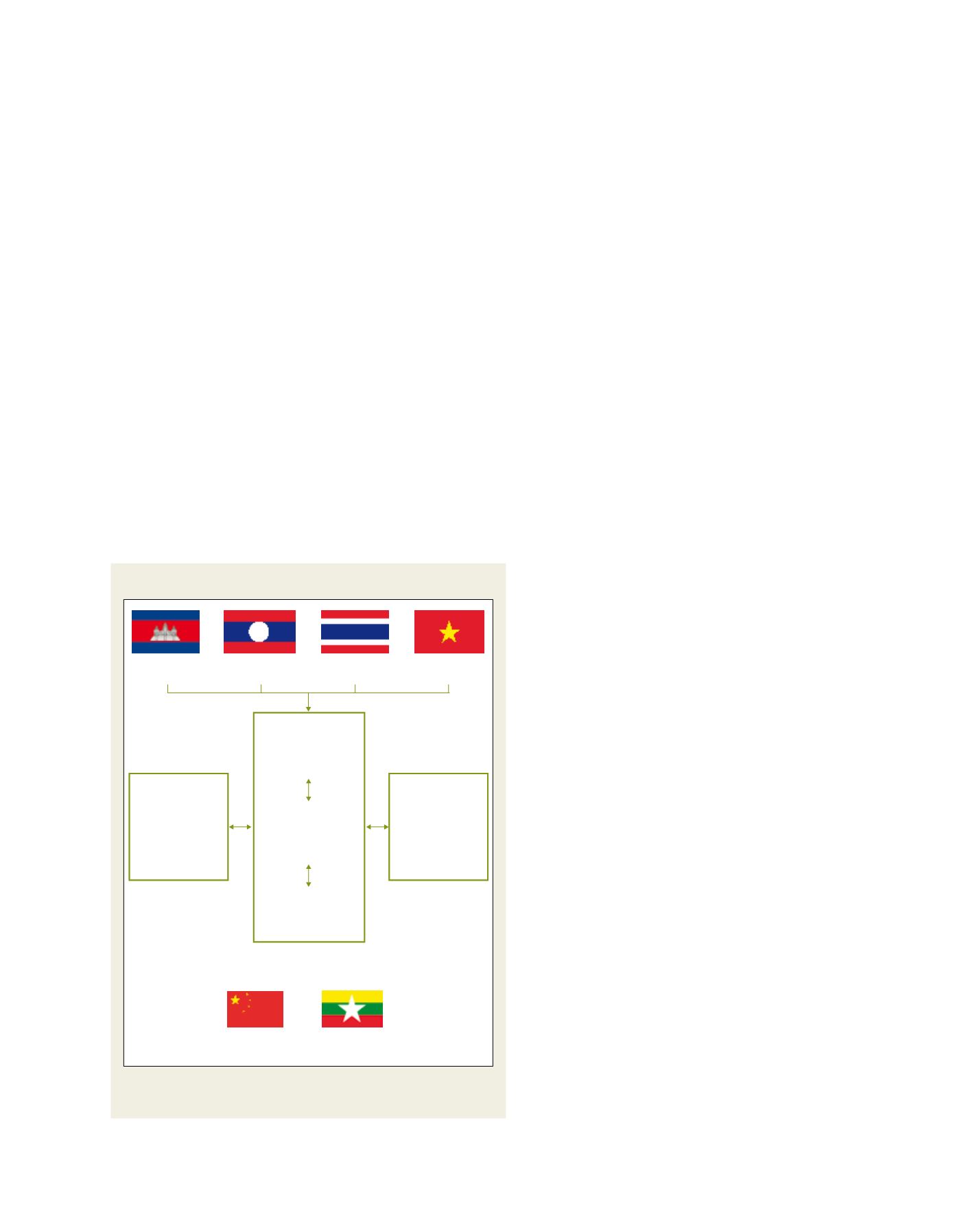

[
] 32
W
ater
D
iplomacy
can help societies explore and adaptively reform water
governance – rather than assuming that a single model
fits all social and resource contexts.
From the outset, M-POWERmade a deliberate choice to
focus on the wider region, including several international
andmany domestic river basins, rather than to overly focus
on theMekong River Basin and thereby frame toomuch ‘in’
or ‘out’ of different political arenas. The first major public
M-POWER cooperation was in November 2004 when
network members convened, facilitated and provided
catalytic knowledge inputs to a high-level roundtable on
‘Using Water, Caring for Environment: Challenges for the
Mekong region’ at the World Conservation Congress in
Bangkok. The event included ministers from five Mekong
countries (all but Myanmar) as well as non-state actors.
Sensitive issues were tabled for discussion – inter-basin
water diversions into Thailand, Salween hydropower
development in China’s Yunnan province, and threats
to the Tonle Sap ecosystem that would be disastrous for
Cambodia. At the time this was a significant achievement,
specifically bringing China, Lower Mekong governments
and non-state actors into the same arena. The event served
to register the Salween hydropower, Thailand grid and
Tonle Sap threats as transboundary issues of high impor-
tance which deserved to be the subject of multi-country,
multi-stakeholder deliberation.
Oppositional advocacy in (parts of) the Mekong
region is well-developed. Local, national or transna-
tional networks of activists that are organized to resist
dominant institutions, interests and discourses can play
a significant role in decision-making or decision-influ-
encing processes. Under the slogan ‘Our River Feeds
Millions’, the Save the Mekong coalition’s campaign
is catalysed and galvanized by the resurgent interest
in planned dams for the Lower Mekong mainstream.
Campaign supporters argue that these dams pose
extraordinary threats to local livelihoods, biodiver-
sity and natural heritage as the flip-side to energy and
income benefits. The campaign has successfully raised
the profile of dam decision-making by Mekong govern-
ments through the strategic use of photography, media,
letter-writing and direct representation. For example,
more than 23,000 signatures were attached to a peti-
tion warning of the negative consequences of Lower
Mekong mainstream dams, sent to the Prime Ministers
of Cambodia, Laos, Thailand and Viet Nam on 19
October 2009. Due to strategic and persistent advocacy
since 2009, word of the campaign has also reached
distant parliaments in places such as the United States
and Australia.
The Save the Mekong coalition has succeeded in
heightening the understanding of risks to ecosystems
and livelihoods, and is pressing governments – both in
and outside the Mekong region – to take their responsi-
bilities for project-affected people and nature seriously.
A major achievement of the campaign has been to
succeed, despite available science being inconclusive,
in reframing the perceived dams threats from environ-
mental protection to food security and the potential
left out of MRCS activities or perceive the MRCS to encroach on
their national space. In turn, the NMCSs must also establish their
own role and working space within their national polities, with their
functional power much less than key water-related ministries and
agencies in each country. As in any large family, it is not possible
for all the interaction to be smooth. The vaunted ‘Mekong spirit’ of
cooperation often seems optimistically overstated; but that is not
to deny the importance of doing everything possible to encourage
a constructive spirit between the countries sharing precious water
resources, risks and opportunities.
The M-POWER network has been working since 2004 implement-
ing a Mekong Program for Water Environment and Resilience. The
vision for the network is for the region to realize an internation-
ally accepted standard of democracy in water governance. A core
objective is to make it normal practice for important national and
transnational water-related options and decisions to be examined
in the public sphere; another is to support the development of
governance analysts with experience across the region. M-POWER
takes a broad view of democratization, interpreted as encompass-
ing issues of public participation and deliberation; separation of
powers; accountability of public institutions; social and gender
justice; protection of rights; representation; decentralization; and
dissemination of information. Network members believe that action-
research, facilitated dialogues and stronger knowledge networks
Organization of the Mekong River Commission
Government of
Cambodia
Government of
Lao PDR
Government of
Thailand
Government of
Viet Nam
Donor Consultative
Group
Development
partners and other
cooperating
organizations
National Mekong
Committees (NMCs)
NMC Secretariats
Line agencies
Dialogue Partners
MRC Secretariat
Technical and
administrative arm
Joint Committee
Members at Head
of Department level
or higher
Council
Members at
Ministerial and
Cabinet level
Government of
China
Government of
Myanmar
The organizational structure of the Mekong River Commission entails many
elements in a complex political dynamic
Source: Mekong River Commission


















